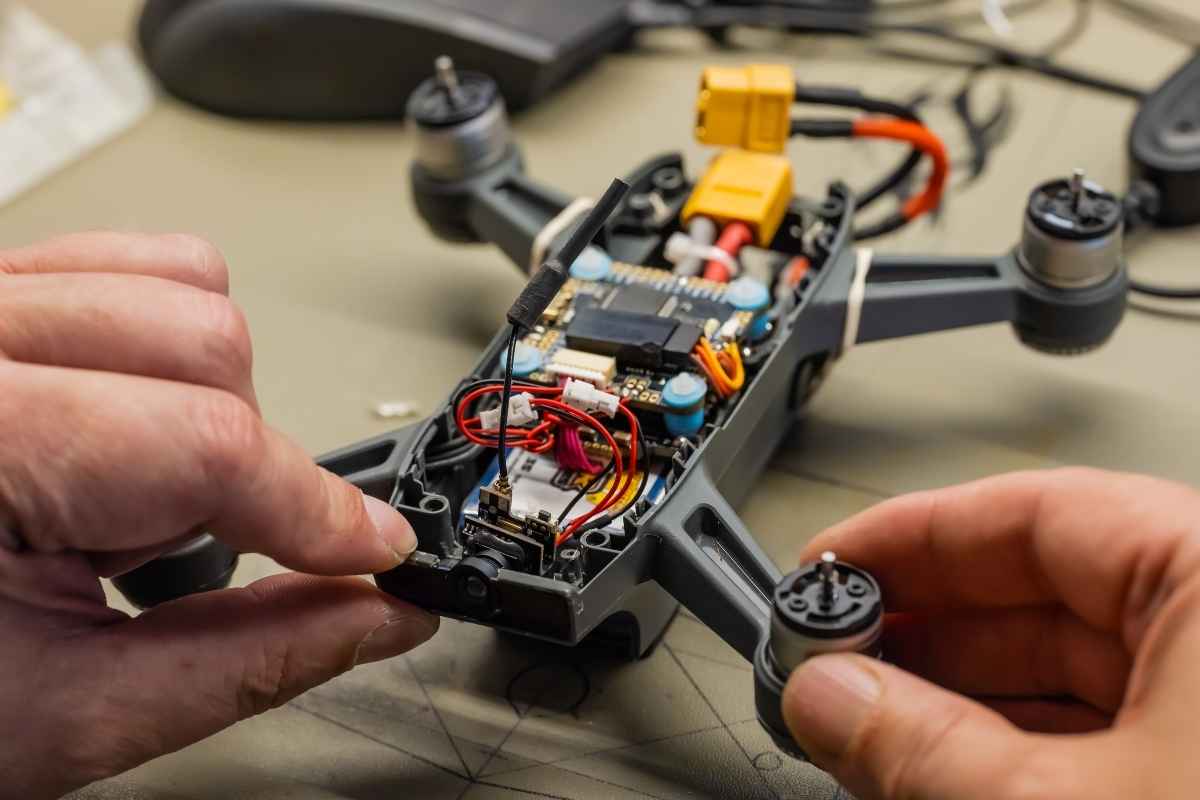
Drones—those flying gadgets you might see buzzing around parks, beaches, or even delivering packages—are pretty cool, right? But what exactly are they, and how do they work? In this article, we’ll break it down into simple terms and explore how drones are being used in different industries. By the end, you’ll have a good idea of why drones are more than just toys!
What Exactly Is a Drone?
A drone, in simple words, is an aircraft without a human pilot on board. You control it from the ground using a remote control, or sometimes it can fly all by itself using built-in technology. Drones come in various shapes and sizes. Some are small and light, like a bird, while others are large and can carry heavy equipment, like cameras or even parcels.
How Do Drones Fly?
Now, let’s get into the fun part: how drones fly. Drones have rotors—these are like tiny helicopter blades that spin around. These rotors lift the drone off the ground. A typical drone has four rotors, which is why you might hear people calling them “quadcopters.” Each rotor spins in a specific direction to balance the drone in the air.
The drone’s remote controller, which could be in your hand or an app on your phone, tells it what to do. Want the drone to go up, down, left, or right? It listens to you through wireless signals and does just that! Inside the drone, there’s a brain called a gyroscope, which helps keep it stable, so it doesn’t wobble or fall mid-air.
Some drones also have built-in GPS (like the maps in your phone). This helps the drone know exactly where it is, allowing it to follow routes, return home, or even hover in one spot without drifting away.
How Are Drones Controlled?
Drones can be flown in two ways:
- Manual Control: Here, the operator or pilot flies the drone using a joystick, much like playing a video game.
- Autonomous Flight: Some advanced drones can be programmed to fly by themselves. You can tell the drone to go from Point A to Point B, and it’ll do so on its own!
When flying manually, the pilot sends commands through the remote control. The drone receives these signals, telling the motors and rotors to spin faster or slower. These small adjustments help the drone move up, down, or sideways smoothly.
Applications of Drones in Various Industries
Now that you understand how drones work, let’s talk about how they’re used in different industries. Spoiler alert: drones do a lot more than just taking cool videos!
1. Photography and Filmmaking
If you’ve watched movies or seen stunning landscape photos, chances are a drone was involved. Drones can fly high above buildings, mountains, and oceans, capturing breathtaking aerial views that were once only possible with helicopters. Because drones are small and quiet, they can get up close to nature without disturbing wildlife. They’re also used in live sports events to get bird’s-eye views of the action.
2. Delivery Services
Remember when waiting for a package took days or weeks? Some companies, like Amazon, are testing drones to deliver packages right to your doorstep in record time. The drone can pick up a package from a warehouse and fly straight to your home. No traffic jams, no delays!
Drones can also help deliver food, medicines, and even organs for transplants, especially in places where roads are bad or too far away. Imagine a drone saving a life by flying an organ to a hospital!
3. Agriculture
Farmers are getting a helping hand from drones too. Drones equipped with cameras can fly over fields and check how crops are doing. This allows farmers to spot areas where plants might not be growing well, or where pests are causing problems. Some drones can even spray water or pesticides on crops, making farming much more efficient. With drones, farmers can cover large areas in less time.
4. Construction and Real Estate
In the construction world, drones are used to survey land and help plan where buildings will go. Engineers can get a bird’s-eye view of the entire construction site, which makes it easier to design and build projects accurately. Real estate agents also use drones to take aerial photos and videos of properties. This helps potential buyers see homes and neighborhoods from unique angles, making it easier to make decisions.
5. Emergency and Rescue Operations
Drones are becoming lifesavers, literally. During natural disasters, like floods or earthquakes, drones can be sent to find survivors or deliver supplies to those in need. They can reach areas that are too dangerous for humans to go. Drones with thermal cameras can even detect body heat, helping rescue teams locate people trapped under rubble or lost in forests.
In firefighting, drones can give fire crews a look at how a fire is spreading. This helps them figure out the best way to put it out and prevent more damage.
6. Environmental Conservation
Drones are also used to protect the environment. For example, they can fly over forests to monitor wildlife or keep an eye on endangered species. Scientists use drones to track animal migration or watch over marine life like whales. Drones also help stop illegal activities like poaching, as they can patrol areas where it’s difficult for humans to reach.
7. Military and Defense
Drones were initially developed for military use. In the defense industry, they play a big role in surveillance and reconnaissance, gathering information without putting soldiers in harm’s way. Drones can fly into dangerous areas, take photos or videos, and send the information back to commanders. Some military drones are even used in combat, though this aspect remains controversial due to the risks involved.
The Future of Drones
Drones are already doing so much, but what’s next? As technology improves, we might see drones becoming even smarter and more helpful. There’s talk of drones playing a bigger role in everyday life, from delivering groceries to monitoring traffic and pollution in cities. Some companies are even working on drones big enough to carry people!
Imagine flying to work in your own personal drone! While we’re not quite there yet, it’s exciting to think about the possibilities.
Drones are more than just flying gadgets—they’re a crucial part of many industries, helping with everything from farming to filmmaking. As they continue to evolve, drones will likely become even more common in our daily lives. So, the next time you see a drone hovering in the sky, you’ll know exactly how it works and the many ways it’s changing the world!














Add comment